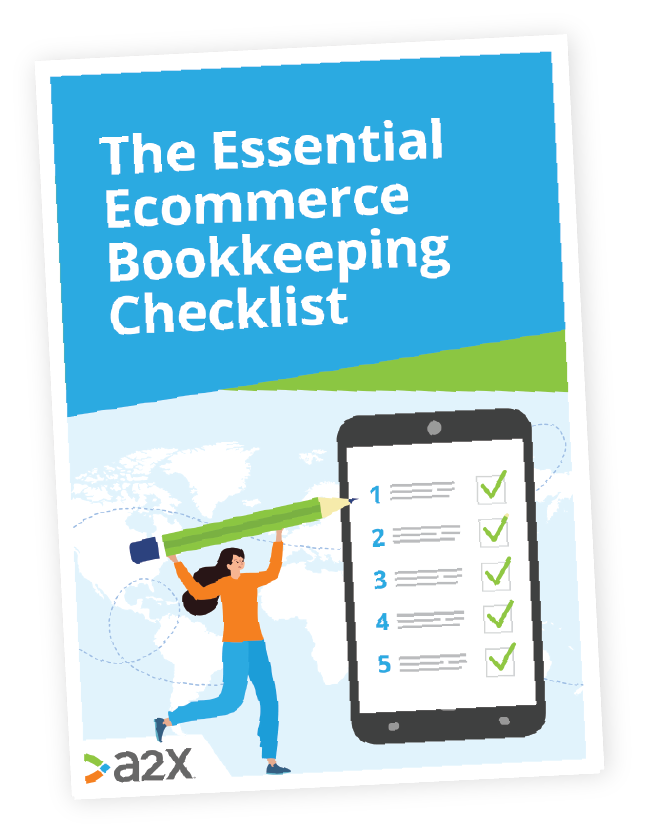
eBay Managed Payments: Everything You Need to Know
Since its inception in 1995 (just one year after Amazon), eBay has capitalized on the obsession we have for both online shopping and selling. But for those who run a business buying and selling items on eBay, reconciling accounts can get messy at the best of times.
For eBay, all payments and purchases were previously routed via Paypal, a subsidiary of eBay. Reconciling all transactions across the two platforms was time-consuming, causing inaccuracies, challenges with dispute resolutions, and delays in funds.
To resolve these issues, there is now eBay Managed Payments: eBay’s new payment system.
What is eBay Managed Payments?
In 2015, Paypal and eBay broke apart, with Paypal becoming its own business entity outside of eBay. For the past 5 years, you’ve still been able to utilise Paypal as part of your eBay experience.
However, that’s set to change. eBay Managed Payments replaces Paypal with a new way for sellers to manage their eBay business.
According to eBay’s Managed Payments FAQ section:
“Managed Payments is the new way to do business on eBay […] all sellers will eventually be required to have eBay manage their payments in order to keep selling on eBay.”
Yep, you read that right. As a seller, you now have no choice but to opt in to eBay Managed Payments.
So, how will this impact you as a seller?
The good news is, it should make life easier with consolidated fees, customized reports, refunds and returns, labels, simplified protections and tax documentation, all accessible through your eBay account hub.
If these changes concern you, you’re not alone. Even eBay’s former CEO Devin Wenig admitted that ’the devil will be in the execution’. It remains to be seen how well it rolls out.
How Does eBay Managed Payments Work?
eBay wants to keep all of your transactions within their platform. The idea behind this is that their internal platform is more streamlined, saving you time and money. This in-house system means you can sell and get paid all in one place.
Rather than funds being routed via Paypal and incurring additional fees, eBay manages the transactions between the seller and buyer. Sellers have access to their own ‘Seller Hub’ where you can track sales, obtain invoicing information, schedule payments and more.
Pros And Cons Of Using eBay Managed Payments
Is eBay Managed Payments worth it?
While eBay is always working towards a ‘ customer-centric’ system, the reality is that it may work better for some businesses than others. To give you an easy overview, here are some pros and cons to consider.
Pros of Using eBay Managed Payments:
- Automatic funds transfer: Forget the old model of having to move funds to Paypal and then into your bank account. With eBay Managed Payments, your bank account is linked to the platforms, and balances are directly deposited.
- More Payment Options: Credit cards, debit cards, gift cards, Paypal, Paypal Credit, Google Pay and Apple Pay are all accepted. This helps to reduce the risk of cart abandonment by ensuring that your customers are catered to, regardless of their preferred payment method.
- Better Seller Protection: Rather than Paypal managing disputes as a third party, sellers are now able to manage this directly through eBay. This gives you more control in the complaints process.
- Simpler Fee Structure: There are zero third party fees when using eBay Managed Payments. You’ll just pay a nominal fee to eBay for each item sold and listed.
- Streamlined Refunds And Returns: With no fees lost to a third party, you can refund up to 100% of the purchase price on returns. These can be done simply via eBay.
- Easier Order Management: Easily track your sales via the introduction of a single order number for each sale. This also improves your ability to track your stock levels.
- Same Great Shipping Options: eBay’s Managed Payments global shipping program ensures you can still easily ship internationally. Customers’ taxes and import/export fees are taken care of for you.
Cons of Using eBay Managed Payments:
- Delayed Funds: It can take between 2-4 days for funds transferred from eBay to hit your nominated account. Some sellers have reported delays of up to 7 days.
- Additional Fees: An added transaction fee of $0.25 per listing, per order now applies in addition to a payment processing fee of 2.7% of total order value.
- Shipping Delays: If you’re a seller that does not ship until funds have been received, then the delayed payments can impact your turnaround and create a poor buyer experience. While you can try to mitigate this by advising longer turnaround times in your listing, this may turn off buyers who want their goods ASAP.
- No Charity/Donation Options: There will no longer be an option to add a charitable donation to your sales at check-out.
What Will eBay Managed Payments Cost Me As A Seller?
eBay Managed Payments Fees are, in a word, simpler.
A fixed fee of just 30c per listing applies in addition to the standard post-sale fee. This is determined via a variable percentage from the total amount of the sale. This percentage varies by category and eBay store tier.
Avoiding Paypal’s additional fees means sellers will make a saving when compared to their pre-managed payment days.
Is eBay Managed Payments Worth It?
In short, yes.
There’s no doubt there are still some teething issues following the enforced migration to eBay Managed Payments. Testimonials from sellers are both positive and negative with some eBay Managed Payments forums going into detail on the challenges they have faced during the transition period.
eBay maintains its positive standpoint and shared one seller’s perspective in detail outlining:
- A saving of over $1200 of Paypal fees compared with the same time last year.
- An easy-to-use payments portal.
- Sales records numbers for easily tracking purchases.
- The 30c saving per listing compared with the previous system.
- Streamlined funds transfer.
- 33% boost in sales due to multiple payment options.
Seller Danny Hone summed it up by saying ‘with Managed Payments, eBay is moving toward the retail standard. It is going to be a much better eBay when you fast forward two years down the line.’
The advantages appear to outweigh the downsides, and eBay’s Managed Payment reviews reflect this.
‘With Managed Payments, eBay is moving toward the retail standard. It is going to be a much better eBay when you fast forward two years down the line.’
What If I Prefer Paypal - Should I Leave eBay?
It may seem shocking to some that eBay is making such a huge shift in the way things have been done for over 20 years.
The reality is that the majority of online marketplaces already operate this way. eBay has been the hold-out.
When we compare Managed Payments to Paypal in the eBay space, taking into account all the pros and cons and our inherent resistance to change, Managed Payments still comes out on top.
There will always be fees and challenges involved in selling on someone else’s platform. It’s just unavoidable. Regardless, eBay remains one of the easiest, most effective and most inexpensive ways to sell your goods.
‘eBay remains one of the easiest, most effective and most inexpensive ways to sell your goods.’
As Payability points out, it would be madness to depart eBay. Setting up your own site and integrating Paypal isn’t a viable solution. eBay simply draws too much traffic to be ignored.
For continued ecommerce success, selling on multiple marketplaces (with some that still offer Paypal) is a better solution than leaving eBay altogether.
eBay Managed Payments Payout Schedule
Arguably, the reconciliation and accounts aspect of a business is nobody’s favourite task, particularly if you have income streams from multiple platforms. The schedule for eBay Managed Payments is completely customizable to suit your needs.
Schedule your payments daily as funds arrive, or weekly on a day chosen by you. As per eBay’s FAQ section: ‘Once a payout is initiated, funds will be available in your bank account per normal bank processing times, typically within 1-4 business days.’
If you’ve ever wasted countless hours trying to reconcile your bank account against your sales summaries, you need an intuitive and intelligent solution.
To save yourself time and unnecessary stress, these transaction summaries can be delivered straight into Xero or QuickBooks Online with A2X. Here, your scheduled payments and summaries are easily matched and reconciled.
How To Account For Your eBay Managed Payments Settlements
If shifting from Paypal to eBay Managed Payments has you feeling uncomfortable about a new way of doing things, A2X can help.
There has never been a better time to upgrade your accounts process. A2X can save you up to 20 hours a month in manual reconciliation - meaning eBay’s new Managed Payment system doesn’t need to complicate your business.
‘A2X can save you up to 20 hours a month in manual reconciliation’
A2X easily integrates with eBay (as well as Amazon, Walmart and Shopify) to simplify your bookkeeping. When linked to your eBay account, A2X:
- Reduces the risk of errors in your reconciliations.
- Automatically fetches new settlements - pulling in all of the transactions, fees, refunds, sales and VAT tax info.
- Makes it easier to keep track of inventory and Cost of Goods Sold.
- Saves you time and effort.
- Increases efficiency.
- Ensures you do not miss the 90-day window for transaction history on eBay.
Automated, Accurate, and Reconciled eBay Accounting
A2X and eBay Managed Payments give you back valuable time for yourself, and your business. Trial A2X for eBay and let it automate your accounting in just a few easy steps.
Also on the Blog
Want to feel completely confident in your ecommerce bookkeeping?
Businesses that document their processes grow faster and make more profit. Download our free checklist to get all of the essential ecommerce bookkeeping processes you need every week, month, quarter, and year.
Download it here

